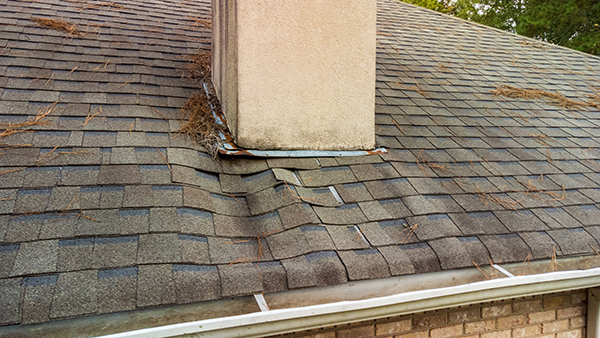How to Prevent Roof Penetration Leaks
Author: Dan Stout | October 30, 2024
We tend to think of roofs as solid, impervious barriers. But in reality, they have several areas that can be prone to leaking, which require a little extra care to ensure a building stays tight and dry. One of the most common areas is roof penetrations.

A roof penetration is any place where an object passes through the entire roofing system, including both the roofing material and the decking itself. It's pretty clear why this is a source for leaks — any hole in a roof is going to be a weak point in the roof's protective membrane.
But a weak point isn't the same as a flaw. Roof penetrations are essential to the functioning of a home or commercial property, and a well-designed roof takes penetrations into account.
Typical penetrations include chimneys, roof vents and plumbing vent stacks. Penetrations also may come from above the roof, such as satellite installations or solar panels. No matter the source, it's important to understand why roof penetrations are so important, and how to minimize the risk of water infiltration.
Why Roof Penetration Leaks Matter
When a roof penetration develops a leak, it can create a massive headache. Because they actually pass through the roof and into the building envelope, penetration leaks act as high-speed expressways for water and air infiltration. They allow moisture to move into the interior fast, bypassing all the secondary elements of the roof such as felt paper, ice and water shield, and even the roof deck itself.
Improperly sealed roof penetrations also allow easy ingress for insects or — in extreme cases — larger animals such as squirrels. These animals often damage the roofing around the leak, allowing more water and air into the building, which leads to more animal damage. The result can spiral into worsening (and more expensive) roof damage.
Penetration leaks can also cause problems for the building's mechanical systems. Water running along a metal vent can rust the vent or fasteners, leading to failure and leaks. On a plumbing vent line, this can be irritating; on a gas furnace vent, it can be deadly.
How to Prevent Roof Penetration Leaks
Whether you're working with a new build or a quick repair, the best way to prevent leaks is to take time to think through the process and be sure you're getting it right.
Consider these factors when flashing a roof penetration:
- The type of roof: Penetration flashing is designed to work with specific types of roofing. A boot may be designed for either PVC or EPDM roofing, for example.
- The slope of the roof: A pipe that comes out of a low-slope roof can use a right-angle boot. A pipe that comes out of a sloped roof will need a boot with a matching slope.
- Potential design hazards: It'd be nice if roofs were always designed to minimize penetration exposure, but that's not the case. This is especially true with modifications that happened years after the roof was installed. A plumbing vent sitting in the middle of a roof valley, for example, will need extra care and attention.
It's important to have a qualified expert checking the penetration when installing, repairing or inspecting a roof.
Roof Penetration and Rooftop System Maintenance
Roof systems benefit from regular inspections, and any roof penetrations should be given a thorough examination. A deteriorating or squirrel-chewed vent boot is a relatively simple fix when caught early, but if neglected, it can turn into a leak that causes thousands of dollars in damage.
Penetration inspection is straightforward: Simply examine all sides of the penetration, looking for cracking, peeling, animal activity or other signs of distress.
While it's not difficult for an experienced roofer to make minor repairs on roof penetrations, it's essential that you don't rush through them. Take your time, make sure you're working with the right materials and follow the manufacturer's directions.
Of course, sometimes you will come across a penetration that seems unusual. If you ever need a little extra guidance, don't hesitate to reach out to a trusted pro who can help shed light on your unique situation.